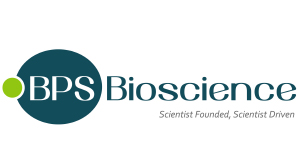Anti-CD19/CD20 CAR-T Cells
Anti-CD19/CD20 CAR-T Cells
SKU
BPS82481
Packaging Unit
1 Vial
Manufacturer
BPS Bioscience
Availability:
loading...
Price is loading...
Products from BPS Bioscience require a minimum order value above 400€
Application: / Use as a positive control in the development of anti-CD19/CD20 CAR-T cells./ Screen modulators of anti-CD19/CD20 CAR-T cytotoxicity./ Design and optimize co-culture cytotoxicity assays for anti-CD19/CD20 specific CAR-T cell evaluation.
Background: B-lymphocyte antigen CD19 (Cluster of Differentiation 19), also known as B-Lymphocyte Surface Antigen B4 and CVID3, is a transmembrane protein expressed in follicular dendritic cells and all B lineage cells except plasma cells. CD19 plays two major roles in human B cells. It acts as an adaptor protein to recruit cytoplasmic signaling proteins to the membrane and it works within the CD19/CD21 complex to decrease the threshold for B cell receptor signaling pathways. Due to its presence on all B cells, it is a biomarker for B lymphocyte development and lymphoma diagnosis and can be used as a target for leukemia immunotherapies. CD19-targeted therapies based on T cells that express CD19-specific chimeric antigen receptors (CARs) have been utilized for their antitumor abilities in patients with CD19+ lymphoma and leukemia, such as Non-Hodgkins Lymphoma (NHL), CLL and ALL. CD20 (MS4A1) is a glycosylated phosphoprotein expressed on the cell surface of B cells. CD20 is a highly attractive target antigen for immunotherapy because it is highly expressed in more than 90% of patients with B-cell lymphoma. First approved in 1997, Rituximab (Rituxan) is a chimeric monoclonal antibody targeting CD20 and has been classified by the World Health Organization as an “Essential Medicine”. Since then, additional monoclonal antibodies against CD20 have been approved or are being tested in clinical trials for the treatment of multiple sclerosis (MS), chronic lymphocytic leukemia (CLL), follicular lymphoma, diffuse large B cell lymphoma (DLBCL), rheumatoid arthritis, non-Hodgkin’s lymphoma, systemic lupus erythematosus, and myalgic encephalomyelitis (chronic fatigue syndrome). More recently, anti-CD20-CD19 bispecific CAR-T cells have been developed to address concerns over potential relapse.
Description: Anti-CD19/CD20 CAR-T Cells are produced by high-titer lentiviral transduction of human primary CD4+ and CD8+ T cells using Anti-CD19/CD20 CAR Lentivirus. These ready-to-use CAR (chimeric antigen receptor)-T cells express an anti-CD19/CD20 CAR consisting of the ScFv portions of both anti-CD20 (Clone OMB-157) and anti-CD19 (clone FMC63) linked to a second generation CAR containing IgG4 hinge and CD28 transmembrane domains, 4-1BB and CD3ζ signaling domains (Figure 1).These CAR-T cells have been validated using flow cytometry (to determine CAR expression) and co-culture cytotoxicity assays. Figure 1. Construct diagram showing components of the Anti-CD19/CD20 CAR expressed in Anti-CD19/CD20 CAR-T Cells.
Mycoplasma Testing: The cells have been screened to confirm the absence of Mycoplasma species.
Storage Stability: Cells are shipped in dry ice and should immediately be thawed or stored in liquid nitrogen upon receipt. Do not use a -80°C freezer for long term storage.
Supplied As: Each vial contains 2 x 106 cells in 1 ml of CryoStor® CS10 (Stemcell Technologies #100-1061)
Target: CD19, CD20
Uniprot: P15391, P11836
Warnings: Avoid freeze/thaw cycles. Donors have been screened and determined negative for: Hepatitis B (anti-HBc EIA, HBsAg EIA) Hepatitis C (anti-HCV EIA) Human Immunodeficiency Virus (HIV-1/HIV-2 plus O) Human T-Lymphotropic Virus (HTLV-I/II) HIV-1/HCV/HBV West Nile Virus Trypanasoma cruzi Note: Testing cannot guarantee that any sample is completely virus-free. These cells should be treated as potentially infectious and appropriate Biological Safety Level 2 (BSL-2) precautions should be used.BiosafetyThe anti-CD19/CD20 CAR-T cells are produced with SIN (self-inactivation) lentivector which ensures self-inactivation of the lentiviral construct after transduction and integration into the genomic DNA of the target cells. of the HIV genes (gag, pol, rev) will be expressed in the transduced cells, as they are expressed from packaging plasmids lacking the packing signal and are not present in the lentivirus particle.
Biosafety Level: BSL-1
References: Depoil D., et al., 2008 Nat Immunol. 9: 63-72.van Zelm M.C., et al., 2006 N Engl J Med. 354: 1901-1912.Kosmas C., et al., 2002 Leukemia. 16: 2004-2015. Martyniszyn A., et al., 2017 Hum Gene Ther. 28(12): 1147-1157.
Application: / Use as a positive control in the development of anti-CD19/CD20 CAR-T cells./ Screen modulators of anti-CD19/CD20 CAR-T cytotoxicity./ Design and optimize co-culture cytotoxicity assays for anti-CD19/CD20 specific CAR-T cell evaluation.
Background: B-lymphocyte antigen CD19 (Cluster of Differentiation 19), also known as B-Lymphocyte Surface Antigen B4 and CVID3, is a transmembrane protein expressed in follicular dendritic cells and all B lineage cells except plasma cells. CD19 plays two major roles in human B cells. It acts as an adaptor protein to recruit cytoplasmic signaling proteins to the membrane and it works within the CD19/CD21 complex to decrease the threshold for B cell receptor signaling pathways. Due to its presence on all B cells, it is a biomarker for B lymphocyte development and lymphoma diagnosis and can be used as a target for leukemia immunotherapies. CD19-targeted therapies based on T cells that express CD19-specific chimeric antigen receptors (CARs) have been utilized for their antitumor abilities in patients with CD19+ lymphoma and leukemia, such as Non-Hodgkins Lymphoma (NHL), CLL and ALL. CD20 (MS4A1) is a glycosylated phosphoprotein expressed on the cell surface of B cells. CD20 is a highly attractive target antigen for immunotherapy because it is highly expressed in more than 90% of patients with B-cell lymphoma. First approved in 1997, Rituximab (Rituxan) is a chimeric monoclonal antibody targeting CD20 and has been classified by the World Health Organization as an “Essential Medicine”. Since then, additional monoclonal antibodies against CD20 have been approved or are being tested in clinical trials for the treatment of multiple sclerosis (MS), chronic lymphocytic leukemia (CLL), follicular lymphoma, diffuse large B cell lymphoma (DLBCL), rheumatoid arthritis, non-Hodgkin’s lymphoma, systemic lupus erythematosus, and myalgic encephalomyelitis (chronic fatigue syndrome). More recently, anti-CD20-CD19 bispecific CAR-T cells have been developed to address concerns over potential relapse.
Description: Anti-CD19/CD20 CAR-T Cells are produced by high-titer lentiviral transduction of human primary CD4+ and CD8+ T cells using Anti-CD19/CD20 CAR Lentivirus. These ready-to-use CAR (chimeric antigen receptor)-T cells express an anti-CD19/CD20 CAR consisting of the ScFv portions of both anti-CD20 (Clone OMB-157) and anti-CD19 (clone FMC63) linked to a second generation CAR containing IgG4 hinge and CD28 transmembrane domains, 4-1BB and CD3ζ signaling domains (Figure 1).These CAR-T cells have been validated using flow cytometry (to determine CAR expression) and co-culture cytotoxicity assays. Figure 1. Construct diagram showing components of the Anti-CD19/CD20 CAR expressed in Anti-CD19/CD20 CAR-T Cells.
Mycoplasma Testing: The cells have been screened to confirm the absence of Mycoplasma species.
Storage Stability: Cells are shipped in dry ice and should immediately be thawed or stored in liquid nitrogen upon receipt. Do not use a -80°C freezer for long term storage.
Supplied As: Each vial contains 2 x 106 cells in 1 ml of CryoStor® CS10 (Stemcell Technologies #100-1061)
Target: CD19, CD20
Uniprot: P15391, P11836
Warnings: Avoid freeze/thaw cycles. Donors have been screened and determined negative for: Hepatitis B (anti-HBc EIA, HBsAg EIA) Hepatitis C (anti-HCV EIA) Human Immunodeficiency Virus (HIV-1/HIV-2 plus O) Human T-Lymphotropic Virus (HTLV-I/II) HIV-1/HCV/HBV West Nile Virus Trypanasoma cruzi Note: Testing cannot guarantee that any sample is completely virus-free. These cells should be treated as potentially infectious and appropriate Biological Safety Level 2 (BSL-2) precautions should be used.BiosafetyThe anti-CD19/CD20 CAR-T cells are produced with SIN (self-inactivation) lentivector which ensures self-inactivation of the lentiviral construct after transduction and integration into the genomic DNA of the target cells. of the HIV genes (gag, pol, rev) will be expressed in the transduced cells, as they are expressed from packaging plasmids lacking the packing signal and are not present in the lentivirus particle.
Biosafety Level: BSL-1
References: Depoil D., et al., 2008 Nat Immunol. 9: 63-72.van Zelm M.C., et al., 2006 N Engl J Med. 354: 1901-1912.Kosmas C., et al., 2002 Leukemia. 16: 2004-2015. Martyniszyn A., et al., 2017 Hum Gene Ther. 28(12): 1147-1157.
| SKU | BPS82481 |
|---|---|
| Manufacturer | BPS Bioscience |
| Manufacturer SKU | 82481 |
| Package Unit | 1 Vial |
| Quantity Unit | PAK |
| Product information (PDF) | Download |
| MSDS (PDF) |
|

 Deutsch
Deutsch






